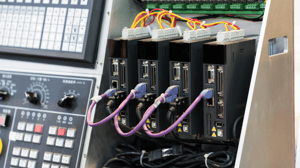IoT data from PLCs is the key to finding insights on the manufacturing floor. These sensors are data creating machines (pun intended). They hold valuable information on the entire manufacturing process. Their insights hold the secrets to increased efficiency, decreased downtime, and improved business operations.
Let's walk through some key data preparation steps for analyzing PLC data.
Step 1: The Right Tools
Manufacturing data is challenging to analyze. Process engineers and analysts struggle when looking at PLC data. This is especially true if you are analyzing multiple lines or plants of PLC data and merging it with other sources.
If you work for a manufacturer, chances are you have tried Excel, a BI tool, or custom code to analyze this data. You know the downfalls: You maxed out Excel. You didn't have the statistical formulas you needed in your BI tool. You don't have the necessary coding skills to analyze the data the way you want.
Analyzing PLC / IoT data with data science, machine learning, advanced analysis, or statistical tooling can be transformational.
We partner with Dataiku for this type of analysis. It allows for both visual and code based data preparation. It also allows you to scale your analysis to machine learning and other advanced analysis in the same tool.
The screenshots below are generated from Dataiku, but the steps remain the same no matter what tool you use.
Step 2: Data Preparation
As a Citizen Data Scientist, I get to be the first to analyze this extremely valuable data. Here are some basic Preparation Recipe steps I start with when looking at this type of data:
Identify column definitions.
PLC data, and IoT data in general, often arrives with columns that aren’t clear to the end user. It's important to define what each column means. In the example below, replacing “A354” with “Temperature” will alleviate confusion later in the analysis. Make sure to include how this is measured (degrees Fahrenheit, lbs, seconds) in the column name.
Another column name that often requires clarity is "Date". Date of what? Clearly identify dates/times such as “Washer Start Time” instead of “Date.”
Confirm the data origin.
If there are multiple lines or systems in the analysis, clearly identify which sensors are a part of each system and line in the column name. Many sensors may appear to be the same name, but are located on different lines. If you are focusing on a single system or equipment part, this is an opportune time to use a Split or Filter Recipe to remove the unnecessary data. If using a Filter Recipe, adjust the sampling method to be “no Sampling(whole data)”.
Review the control limits for extreme outliers.
Whether or not there are existing control limits, review your data for outliers. Review these outliers with the business to determine if the machine was outside of the limits or if the data isn’t relevant such as maintenance time or warm-up time.
Pro tip: Ask for hard limits to identify data that may need to be removed. Such as “Is it possible for this machine to make more than X parts per hour?” to identify data that may need to be removed.
Review for known issues.
Scheduled downtime is common in machine data. Review typical plant closure times (evenings / weekends) with the business. Pay special attention for large gaps in the data. It could indicate longer closures such as vacations or maintenance weeks. Depending on the process, data may not be consistently collected or time periods of missing data that need to be reviewed. Document these findings.
Understand known formulas.
Many metrics regularly monitored in PLC IoT data are a combination of data inputs in an equation. In the example below, Efficiency is the "Run_Hours" variable divided by the "Total_Hours." By creating this formula, we are documenting valuable business formulas and creating new features (aka data points) from existing data points.
In Dataiku, create new formulas as a new step in a Prep Recipe. Work with the business or quality control to identify what metrics they are using to monitor the health of the process.
Step 3: Get Ready for Results
To unlock the insights hidden in your PLC IoT data, focus on data cleaning first. Working closely with machine operators and the business you can make data driven decisions that help increase efficiency, reduce energy costs, and reduce scrap.
Learn more about how our applied Data Science and Analytics solution can help you decide with data.



